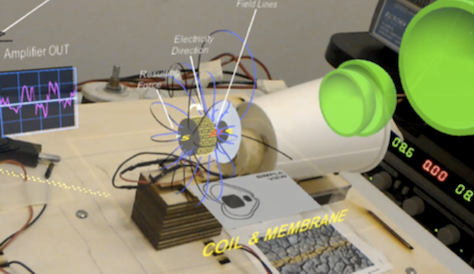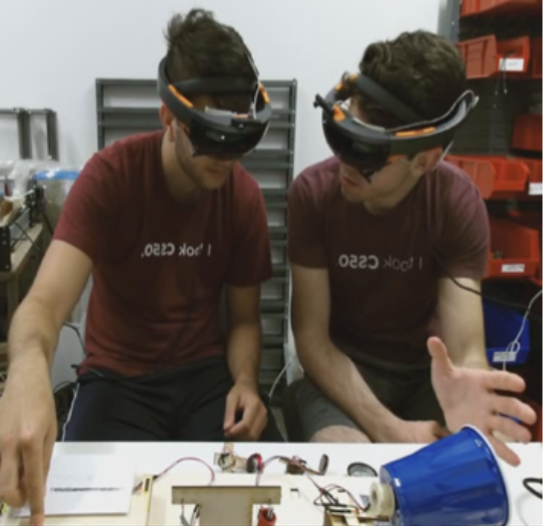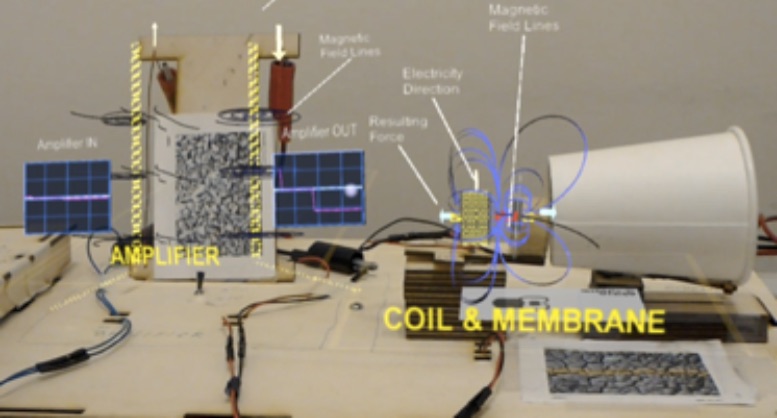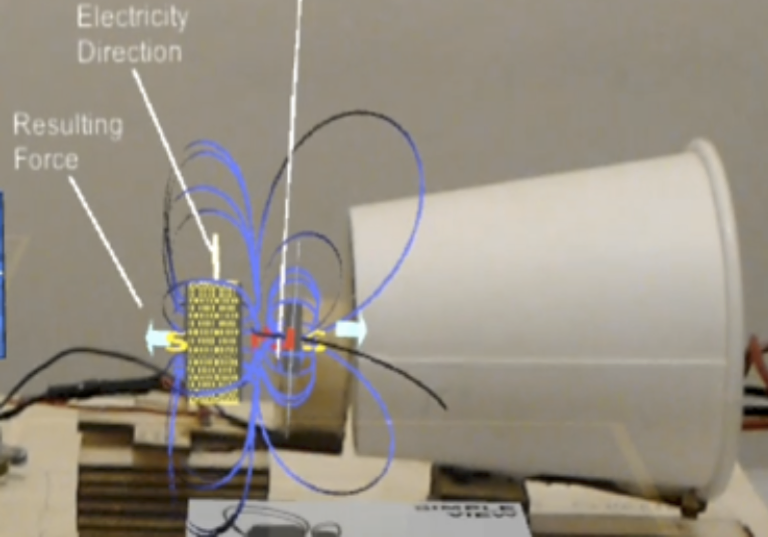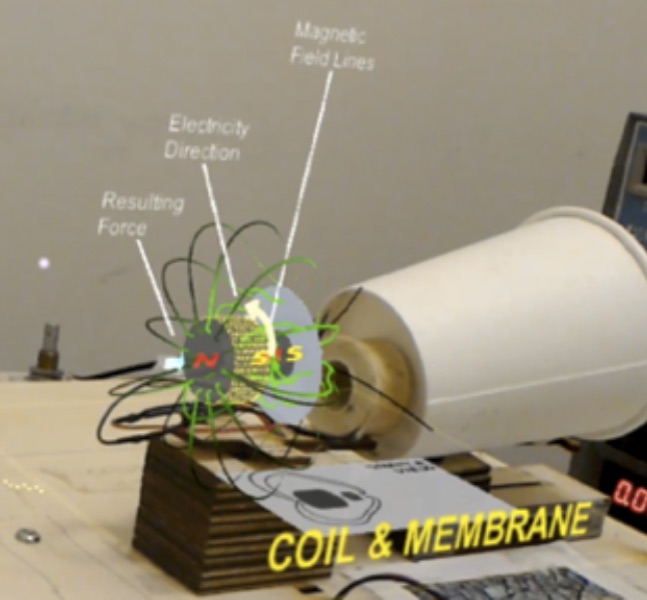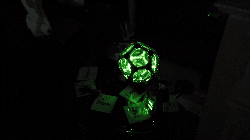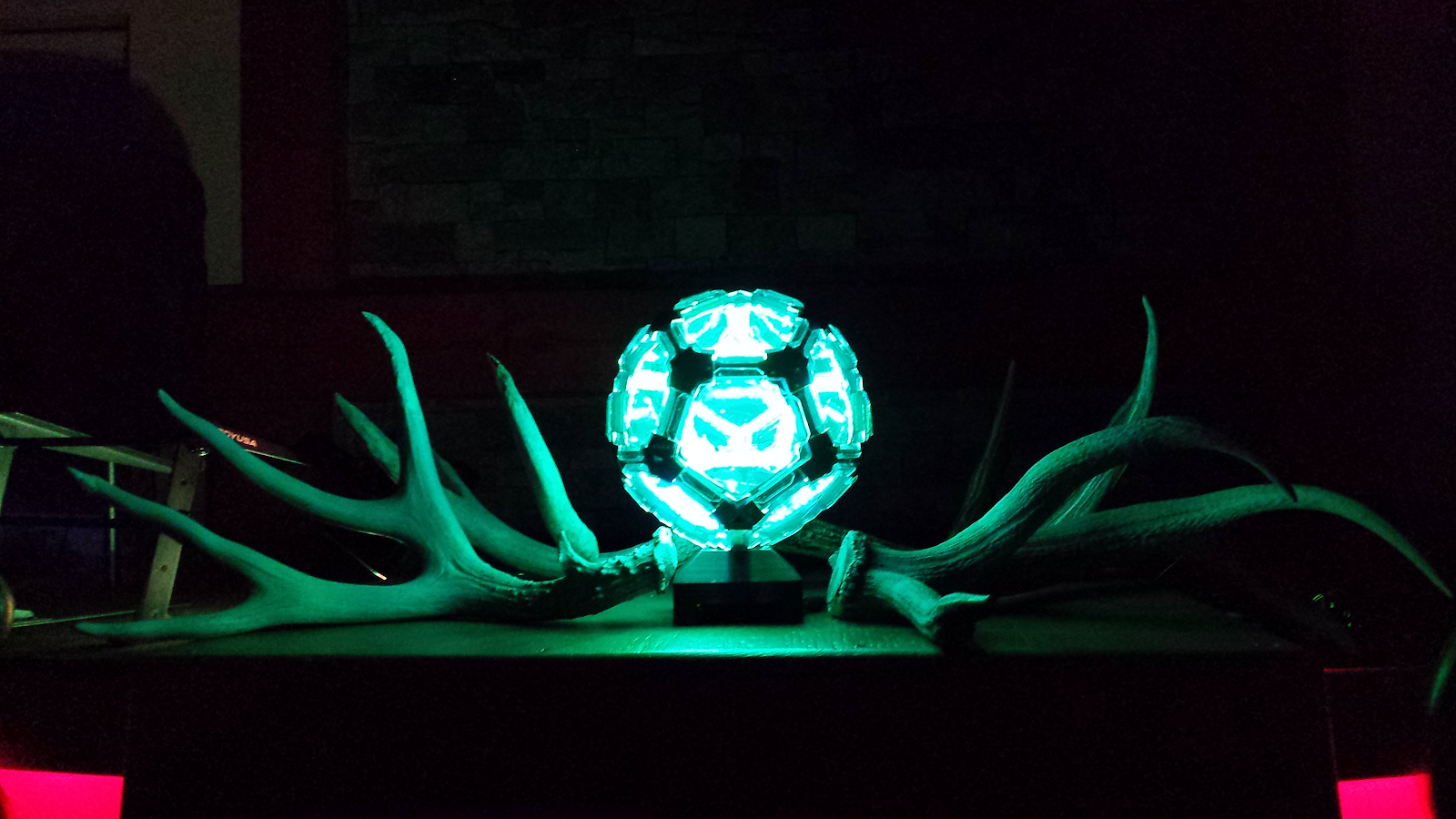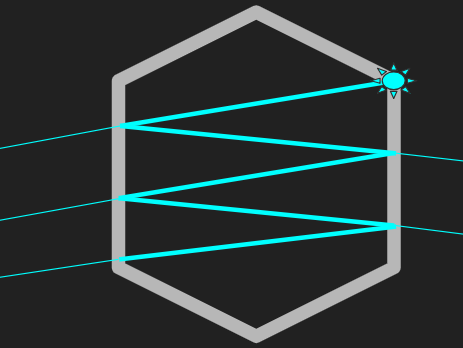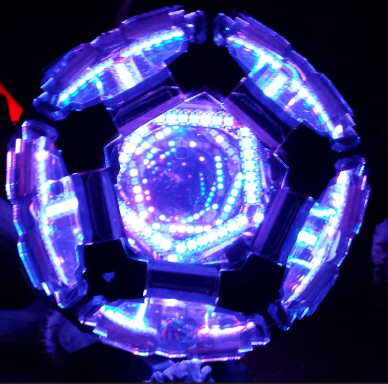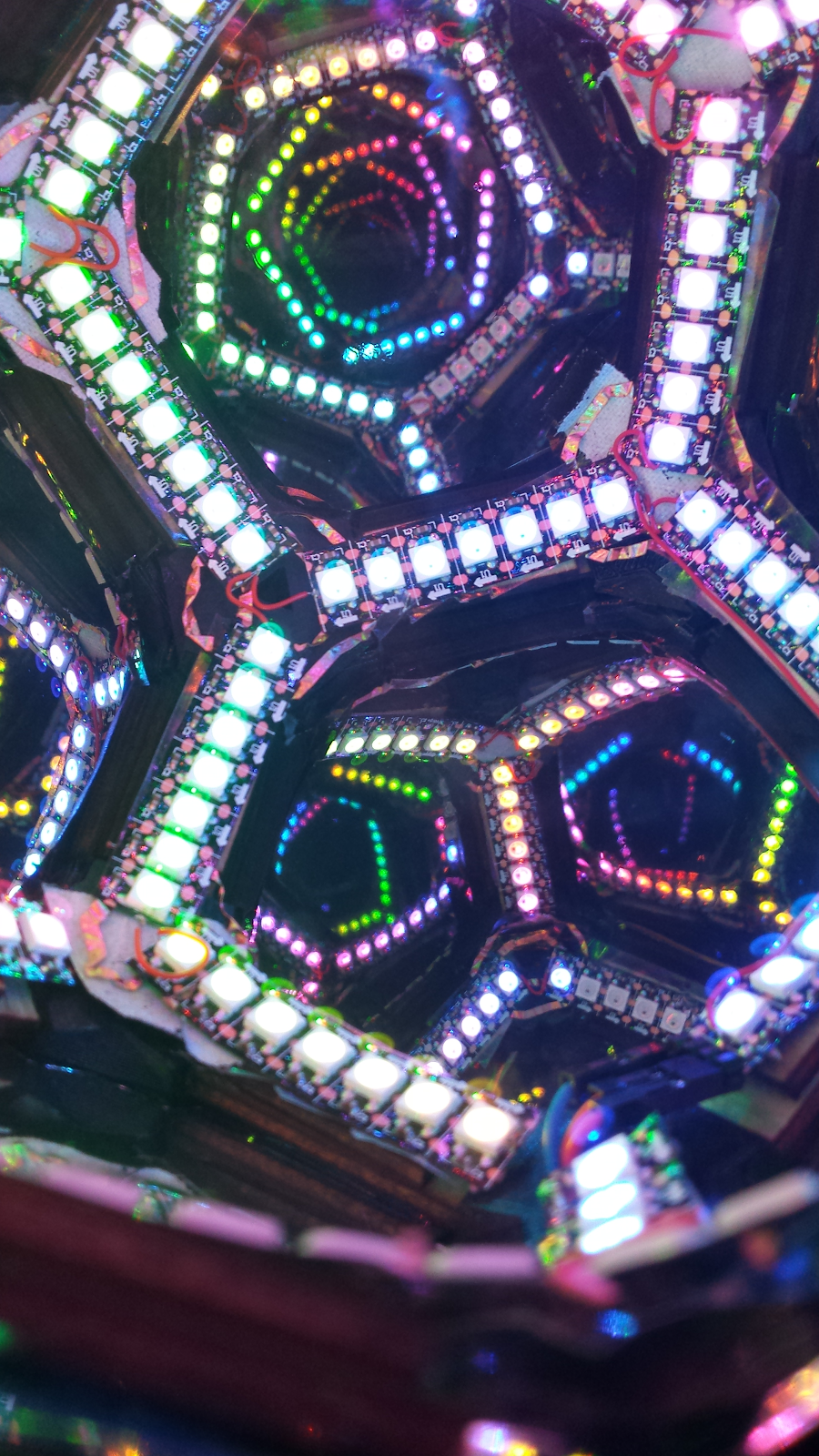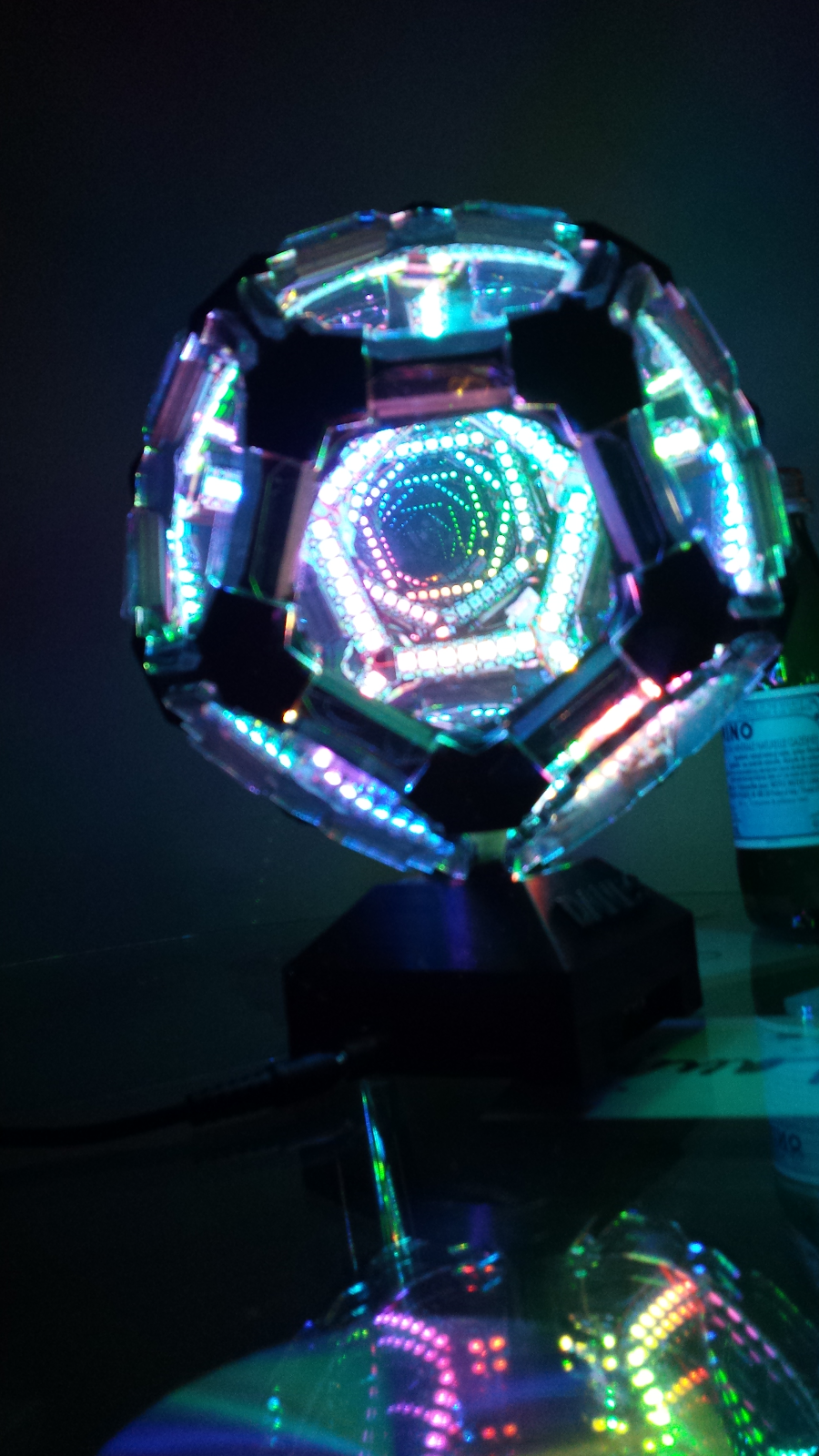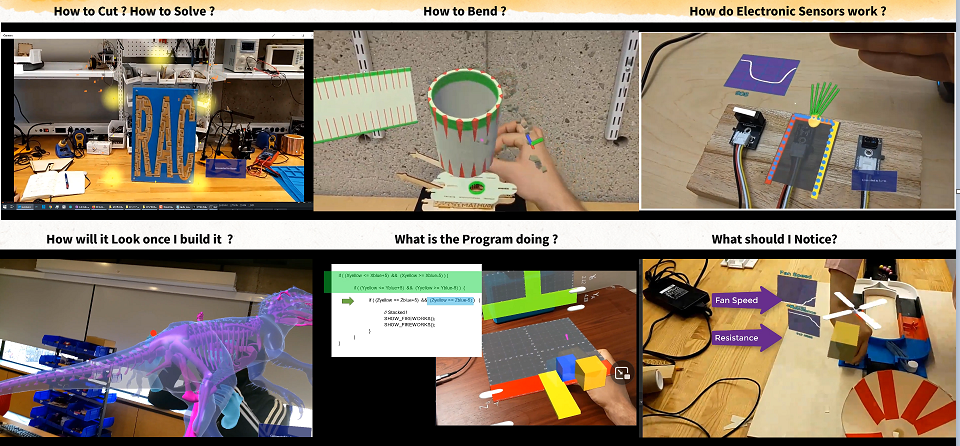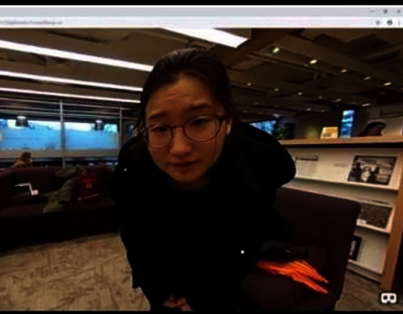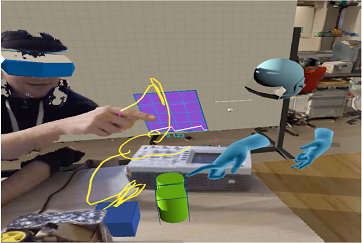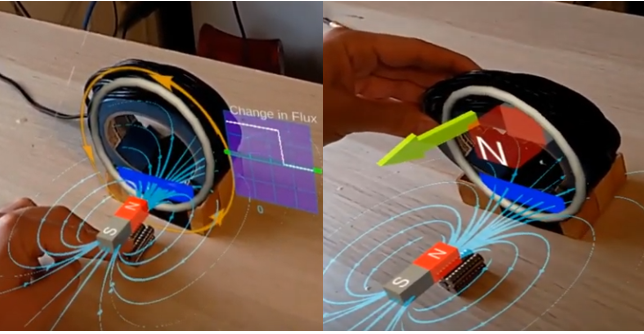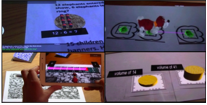Portfolio :: Main Projects
|
AR Speaker: Enhancing Learning of STEM Maker Spaces Through Augmented Reality |
||||
|
Purpose: Postdoctoral Research Lead UX Researcher, Lead Software Developer Development: Topics: augmented-reality electronics internet of things cognition interaction techniques mixed methods user studies |
|
This project explores how a new generation of maker spaces can be enhanced by augmented reality technologies, to create learning environments that enable making with understanding. Maker spaces and digital fabrication labs are synergistic environments where people learn STEM hard skills as well as 21st century soft skills such as collaboration, creativity, problem solving, etc. Maker space activities often involve multiple interrelated physical phenomena (e.g. the flow of electricity, the interaction of magnetic fields, the movement of air pressure waves, etc). In this project we use Microsoft Hololenses to show the invisible phenomena involved in audio-producing speakers. The research involves qualitative and quantitative analysis of collaborative learning captured through a variety of multimodal sensors (Kinect body sensors, physiological bracelets, eyetrackers). Creation of this system involved hardware and software development (C++, C#, Unity3D, Arduino, Raspberry Pi, Python, Hololens). 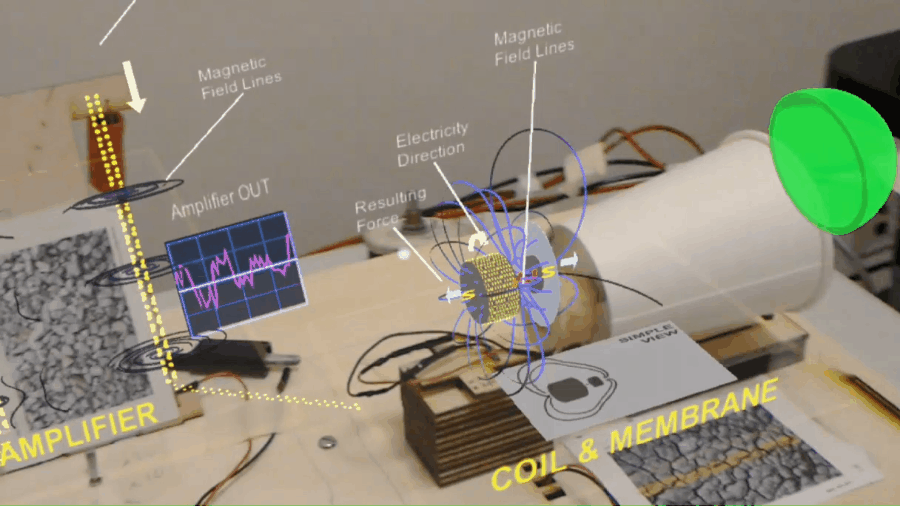
Images : |
||
|
LightNode: Trapping Light Inside a Dodecahedron |
|||
|
Purpose: Curiosity and Fun
Development: Topics: electronics education |
|
This is a personal curiosity project. I was interested to see what happens if light is trapped inside a spherical object. Using one-way mirrors which reflect 80% of light, light is trapped inside this dodecahedron, a 3D version of a flat infinity mirror . This object is sound-reactive and internet controlled. I used laser cutters to shape the edges, 3D printed the custom-designed dodecahedron nodes, used a vinyl cutter to ease the wiring, and programmed the electronics (Arduino / C++, Raspberry Pi / Node.JS). Given away as a gift.
|
|
|
Co-Creating the Future Augmented Reality Maker Spaces |
|||
|
Purpose: Research Project Lead, Lead Software Developer, Lead UX Researcher
Development: Topics: augmented-reality codesign creativity authoring tools electronics internet of things |
|
This project is a co-creation activity where we work with students in a makerspace class, to co-create / co-design prototypes and explore the future of augmented reality for maker spaces. Every week during the spring 2022 course, my team and I (augmented reality technology engineers and educational researchers) worked with students (graduate students at Harvard Graduate School of Education) to imagine what the future of AR-enhanced makerspaces would look like, and we built prototypes to explore that future. It was a co-design process where the students had a voice to shape the future learning technology, by brainstorming ideas for the future, reflecting on how augmented reality technology can help learning in makerspaces, then my team built those ideas into working prototypes, which we showed to other students and gathered feedback on their educational impact. As part of this process we created a Unity3D open-source middleware authoring platform, that can be used to more easily create multi-user augmented reality experiences tied to physical objects. It was a really wonderful process of co-designing the future, by creating rapid collaborations between people of different backgrounds and different roles. We generated (1) a list of opportunities for AR in future makerspaces, (2) a set of guidelines for integrating AR into makerspaces, and (3) an understanding of impacts on the co-designer students.
Publications Radu, I., Yuan, J., Huang, X., & Schneider, B. (2023). Charting opportunities and guidelines for augmented reality in makerspaces through prototyping and co-design research. Computers & Education: X Reality, 2, 100008. (PDF) Prototype Images: Software Video
|
|
|
PBS KIDS Cyberchase Shape Quest: Using Augmented Reality for Elementary-School Mathematics Education |
|
|||||||
|
Purpose: Contract Work Team: 5 organizations and Lead Game Designer Development: Topics: augmented-reality children cognition education interaction techniques user studies |
|
I directed the design, research, and overall production of this educational augmented-reality app which contains 3 games. Help your animal friends return to their homes in this AR game, which uses a tablet’s camera to combine the real world with digital content. Travel through 5 different environments and apply spatial memory, visualization and modeling skills, while investigating, predicting, putting together and taking apart two- and three-dimensional shapes. But this isn’t a game to play just sitting on your couch! By using the camera on your tablet, plus the “AR” technology, you can play while moving your whole body around the gameboard. (Accolades: 500k+ downloads; Top 10 Educational Apps on iTunes Store; Webby Award 2014 Finalist, 2015 Honoree; iKids Award 2015 Finalist) Official Homepage : PBS KIDS Cyberchase Shape Quest Video: Cyber Chase Shape Quest video from user Julie on Vimeo Publications :
Images :   |
|
|||||
|
Holographic Objects: An AR Electronics Toolkit for Sensing and Programming |
|||
|
Purpose: Postdoctoral Research Lead Researcher / Designer Development: Topics: augmented-reality electronics cognition interaction techniques mixed methods user studies |
|
This project is also part of the NSF Making with Understanding grant, which explores how a new generation of maker spaces can be enhanced by augmented reality technologies. In this work we are developing electronic sensors integrated with augmented reality visualizations, in order to allow novice programmers to more easily understand and debug electronic systems that integrate spatially-distributed sensors and actuators. This work involves user research studies, and hardware and software development (C++, C#, Unity3D, Hololens, Arduino, Raspberry Pi). 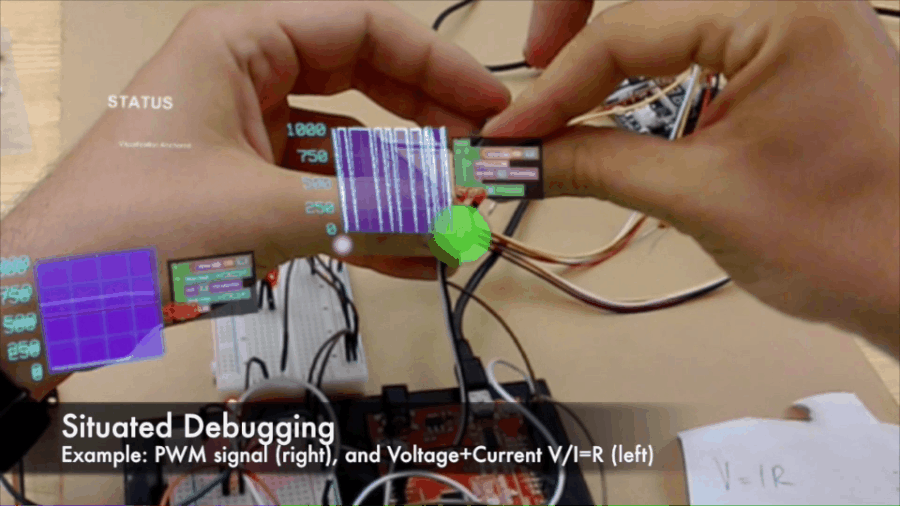 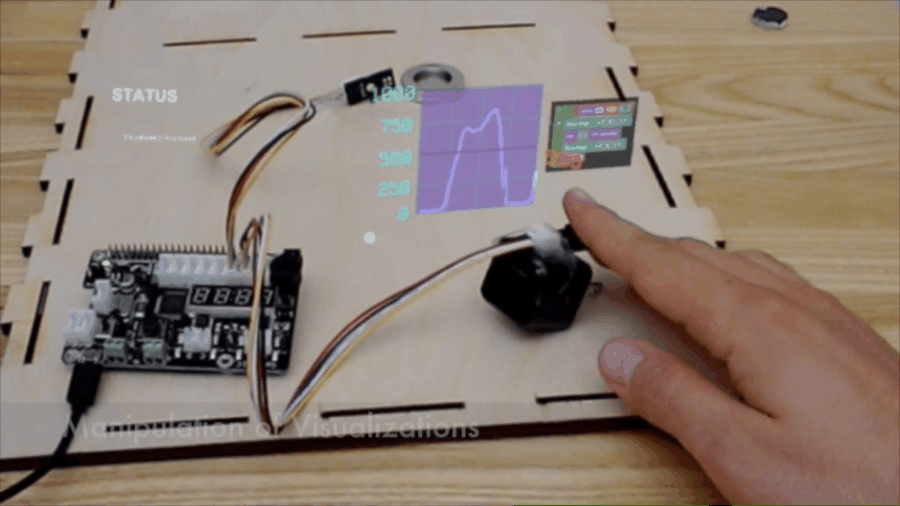
Radu, I., Hv, V., & Schneider, B. (2021). Unequal Impacts of Augmented Reality on Peer Collaborative Learning during Robot Programming. In Proceedings of the international conference on Computer-Supported Collaborative Work. Radu, I., Vanderlee, C., & Schneider, B. (2020). The Augmented Reality Holoboard and Holopen: Electronic Circuit Debugging Tools. In Proceedings of FabLearn 2020. Radu, I., Vanderlee, C., & Schneider, B. (2020). Understanding Augmented Reality Tools in Maker Spaces. International Conference of the Learning Sciences.
|
|
|
Creating Empathy, Revealing Biases, and Altering Mindsets Towards Childhood Literacy using Immersive Technologies |
|||
|
Purpose: Research UX Researcher
Topics: virtual reality 360 video empathy education bias |
|
Challenges in childhood literacy are a significant barrier to education and quality of life. These two projects were part of an ongoing program of research aimed at using immersive technologies to identify what barriers are preventing adults from effectively building childhood early literacy, and subsequently to design experiences that can mitigate those factors. One barrier is the lack of empathy: adults (parents, teachers, and other caregivers) who have high literacy often forget what it's like to be a child, and cannot relate to the experience of a struggling reader. Another barrier is biases: research suggests that the socioeconomic status (SES) of students plays a role in teacher perceptions. In one project we used narrative-based 360-video VR to build empathy in adults for the children in their lives. We built a VR experience to induce emotions related to empathy, then studied its effects on caregiver participants who were parents and teachers, resulting in understanding how people are emotionally moved by VR experiences, and identifying design features that raise user empathy. In another project we used the Mursion system to simulate a virtual classroom, and evaluate how teachers exhibited biased judgements when shown students from varying SES backgrounds. We found most teachers mainly thought they are unbiased, but they significantly judged low SES students as making more progress than high SES students; furthermore, we found immersion was correlated with increased bias in teacher judgements. These approaches can be of particular value when teachers and caretakers must recognize that they have biases, as a necessary step in unlearning these by practicing unbiased strategies in simulated environments, with the aim of transfer to real world classrooms. Radu, I., Dede, C., Seyam, M. R., Feng, T., & Chung, M. (2021). Using 360-video virtual reality to influence caregiver emotions and behaviors for childhood literacy. International Journal of Gaming and Computer-Mediated Simulations (IJGCMS), 13(1), 12-33. (PDF)
Radu, I., Dede, C., Wang, J., Nie, G., Bhola, K., & Scuzzarella, M. (2022). Using Virtual Environments to Reveal Teacher Bias Towards Students’ Socioeconomic Status. In 2022 8th International Conference of the Immersive Learning Research Network (iLRN) (pp. 1-8). IEEE.
Radu, I. & Dede, C. (2019) Designing Immersive Experiences that
Create Empathy, Reveal Biases, Alter Mindsets. Serious Play 2019 Conference, Montreal. Media:
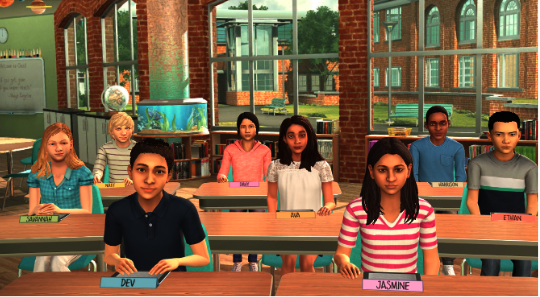 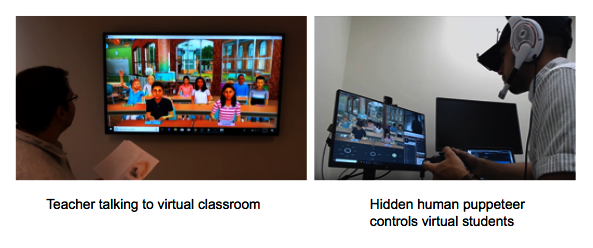 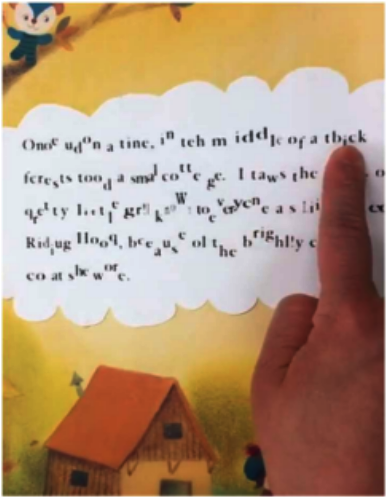  |
|
|
Virtual Makerspaces: Merging AR/VR/MR to Enable Remote Collaborations in Physical Maker Activities |
|||
|
Purpose: Research Lead Software Developer
Development: Topics: augmented-reality virtual-reality 3D scanning electronics internet of things |
|
This research is an exploration of the future of maker spaces, where collaborators (colocated and remote) can discuss, explore, create and learn about 3D physical objects regardless of their physical locations. The system combines augmented reality (AR) headsets, 3D cameras, PC and virtual reality (VR) interfaces, into a virtual space that contains multiple remote students, instructors, physical and virtual objects. Remote students can see a real-time 3D scan of the on-site user's physical environment, and the virtual avatars of other students. The system can support learning and exploration by showing virtual overlays on real objects (ex: showing a physical robot's sensor data or internal circuitry) while responding to real-time manipulation of physical objects by the on-site user; and can support design activities by allowing remote and local participants to annotate physical objects with virtual drawings and virtual models. This platform is being developed as an open-source project, and we are currently building applications with the intention to deploy in hybrid makerspace classrooms involving on-site and remote students. Short Video Long Video
Radu, I., Joy, T., & Schneider, B. (2021, May). Virtual makerspaces: merging AR/VR/MR to enable remote collaborations in physical maker activities. In Extended Abstracts of the 2021 CHI Conference on Human Factors in Computing Systems (pp. 1-5). [ACM LINK]
|
|
|
AR PhET: Augmented Reality for 1-1 Tutoring of Physics of Lenz's Law |
|||
|
Purpose: Research Lead Software Developer, Lead UX Researcher
Development: Topics: augmented-reality electronics internet of things |
|
In this study we investigate the use of AR in remote 1-1 tutoring scenarios, which can be more accessible and affordable to educational institutions since AR devices would not be required for every student. We investigate the context where an instructor is using an AR headset while manipulating physical objects, while working with a student who views the instructor’s view remotely through a computer screen. We envision this context will become popular with educators because it can reduce multiple limitations: personal AR devices for students would not be required, instructors would be able to illustrate learning content through carefully curated AR activities, and students would still be actively engaging in the investigation of the learning material without special knowledge of how to actively control the experience. We present a system for AR-based physics instruction, and perform a between-subjects study where an instructor uses the AR system while teaching electromagnetism physics to a remote student. We measure how the presence of AR visualizations impacts student learning outcomes and inquiry activities.
Radu, I., Huang, X., Kestin, G., & Schneider, B. (2023). How Augmented Reality Influences Student Learning and Inquiry Styles: A Study of 1-1 Physics Remote AR Tutoring. Computers & Education: X Reality
Radu, I., Huang, X., Kestin, G., Shah, Z., & Schneider, B. (2022). How Augmented Reality Transforms Learning and Inquiry Patterns in 1-1 Remote Tutoring. International Conference on Computer Supported Collaborative Learning (ISLS).
|
|
|
|
|
|
|
|||||||
|
|
|
|
|
|||||||
|
Augmented Reality + Scratch AR SPOT - A Tangible Programming Environment for Children |
|
|||||||||
|
Team: 3 people Lead Researcher / Designer / Developer Development: Purpose: PhD. Research Topics: augmented-reality children education cognition hci user studies |
|
AR Spot is the first augmented-reality authoring environment designed for children. An extension of MIT's Scratch project, this environment allows children to create games which are situated in the real world and controlled by physical interactions. The project explores how interaction metaphors can be used in an interface to match children's cognitive abilities with the capabilities of a complex technology. The project involves iterative system development and user studies. Link: : Website (at GaTech Augmented Environments Lab) Video:
Publications :
Images:
|
|
|||||||
|
Context-Responsive Objects |
|
|||||||||
|
Purpose: Personal Project Team : 2 people My Roles: Lead UX Designer, Lead Developer Development: C++, C#, Python, PHP Topics: electronics prototyping internet-of-things gesture-control |
|
With another colleague, I am developing a set of interactive objects that respond to their environment and each other. Some of these ambient artifacts are standalone, while others are Internet-of-Things enabled. I can’t say much because we are currently commercializing them. Images : |
|
|||||||
|
Birthday Lasers |
||||||||||
|
Purpose: Personal Project Team : myself Development: Topics: electronics prototyping lasers |
|
One of my friends likes lasers. I built this Arduino-based laser system which uses motor-mounted mirrors to create shapes from laser beams. The system can be controlled through gestures (using reflected light sensed by photoresistors) or through knobs. Shapes can be saved into non-volatile memory and can be replayed or edited later, or just enjoyed in a loop. This was built to be given away as a birthday gift. Presentations : - Presentation for Atlanta Freeside Technology Spaces (PPTX) Images :
|
||||||||
|
BirthdayLightcube |
|
|||||||||
|
Purpose: Personal Project Team : myself Development: Topics: electronics prototyping |
|
This is my first experiment building a volumetric display. The cube has 256 lights arranged in a 4-layer lattice. It comes with several visualizations such as text scrolling and a variety of pulsing and blinking lights, which the user can control through a simple interface of knobs. Was built to be given away as a birthday gift. Video : Images : - More Photos and Video (GooglePlus link) |
|
|||||||
|
PBS KIDS Prototyping Augmented Reality with Teachers Involving Elementary-School Mathematics Teachers in the Design of AR Applications for Classrooms |
||||||||||
|
Purpose: Contract Work Team: 2 organizations Development: Topics: augmented-reality children education prototyping user-centered-design |
|
In recent years, augmented reality applications for children’s entertainment have been gaining popularity, and educational organizations are increasingly interested in applying this technology to children’s educational games. In this research we collaborated with teachers in order to explore educational potential for AR technology for elementary-school classrooms. Through interviews, surveys and prototyping activities, this project investigated the topics of: What mathematics curriculum topics should technological innovations address in the Grade 1-3 classrooms? Which of the topics are suitable for AR games? And, how can we facilitate an efficient dialogue between educators and game designers? Publications :
|
||||||||
|
Handheld Augmented Reality Interaction Techniques for Children Investigating Relationships Between Design, Usability and Child Development |
|
|||||||||
|
Purpose: My PhD. Research Team: 12 people Lead Researcher / Designer / Developer Development: Topics: augmented-reality children cognition developmental psychology interaction techniques mixed methods user studies |
|
This is an augmented reality game I have built as the main research instrument for my PhD research. It is a smartphone-based game for children aged 5-10 years old. Players take the role of a wizard which must collect a set of magical lemons to create magical items for their pets. Each level of the game is associated with a different AR interaction technique condition, and is followed by various mini-games in which children play with their pet. The system architecture allows data logging and replay/simulation of a child’s entire gameplay; log analysis and visualization tools are built on top of the logging layer to assist in quantitative analysis. The research employs qualitative and quantitative methods to determine the relationships between children’s age, developmental skills, and usability of different AR designs. Publications :
Images : |
|
|||||||
|
Puppy Plus: Augmented Mathematics using Tangibles |
||||||||||
|
Purpose: For My PhD Research Team: 5 people My Roles: Project Lead, Lead Researcher / Designer / Developer Development: C#, Unity3D, Maya Topics: augmented-reality children education game design hci |
|
Through this Android-based AR math game, children 6-8 practice basic mathematics skills through familiar physical interactions. In the game, children manipulate physical game pieces in order to feed a hungry puppy the amount of food it desires on its virtual island. With this project we are exploring design of multi-marker augmented-reality experiences suitable for elementary math classrooms. Images: |
||||||||
|
Sound-Reactive Mesh Morphing Explorations in Real-time Mesh Generation in Unity3D |
|
|||||||||
|
Purpose: Personal Project Team : myself Development: Topics: music visualization |
|
This is my exploration of generating and morphing 3D meshes. The meshes react to Fast-Fourier Transform analysis of real-time music. Current plans are to create a variety of shapes and place them in the user’s environment using augmented reality. Images : |
|
|||||||
|
|
||||||||||
|
Bacteria Snap An Augmented-Reality Game for Teaching Cell Biology |
||||||||||
|
Purpose: For My PhD Research Team : 2 people My Roles: Project Lead, Lead Researcher / Designer / Developer Development: Topics: augmented-reality children education interaction techniques |
|
This game was built to test children’s ability to use different handheld augmented reality interaction techniques, and also to teach children about biology. Children learn about bacteria and antibodies through the matching of shapes. Traditionally performed within the confirms of the computer monitor, this simulation of cellular mechanics exists in the real world at a larger-than-microscopic scale. Although the interaction is physically-oriented, the interactions of the viruses and antibodies focused the learner’s attention on a simplified version of chemical bonding. This game was built on an early version of the ARGON AR browser (http://argon.gatech.edu) Presentations : Presented at the USA Science and Engineering Festival 2012 Images : |
||||||||
|
|
|
|
||||||||
|
Mountain Rescue An Augmented-Reality Game for Animal Ecology |
||||||||||
|
Purpose: For My PhD Research Team : 2 people My Roles: Project Lead, Lead Researcher / Designer / Developer Development: Topics: augmented-reality children education interaction techniques user studies |
|
This game was built to test children’s ability to use different handheld augmented reality interaction techniques, and also to teach children about ecology. Children learn about ecological systems and animal habitats. The players are tasked with delivering lost animals to their preferred habitat. Virtual critters make for a much safer learning experience than real, wild animals! This game was built on an early version of the ARGON AR browser (http://argon.gatech.edu) Presentations : Presented at the USA Science and Engineering Festival 2012 Images : |
||||||||
|
|
|
|
||||||||
|
Spinspace + Spintopia: Studying Handheld-AR Interaction Techniques through Games |
|||
|
Purpose: For My PhD Research
|
In these two handheld augmented-reality games, children construct 3D structures using different interaction techniques on a phone touchscreen. Through interactions such as pushing buttons on a touchscreen, drawing tracks with their finger, or moving and rotating 3D objects, children construct 3D spirographs in Spinspace and interactive drawings in Spintopia. These games are part of an exploration of interaction techniques suitable for elementary-school children. Resources : |
||
|
Embodied Education Through Transparent Displays: Exploring an Educational Application of Transparent Display Technology |
|||
|
Purpose: Internship Project
|
|
In this project, we explored the use of transparent displays for embodied learning. Children played a co-located game by standing on opposite sides of a transparent display. The game responded to body motions, and required communication and collaboration in order to complete. |
|
|
|
|||
|
PingPress : iPhone-based Experience-Sampling Diary Tool |
|||
|
|
|
This platform allows the execution of ESM (Experience Sampling Method) diary studies on the iPhone. It was designed for performing a series of qualitative studies investigating the future of mobile augmented reality. The system is robust enough to be used for a variety of diary-based studies. A backend server component periodically sends questions to participants who respond using an iPhone application. The application captures a variety of media and transfers participant data to a website, where researchers can manage and aggregated data. |
|
|
|
|||
|
Thought Play: |
|||
|
|
|
This is an augmented-reality 3D brainstorming system. It is my second AR project, intended to serve as a starting platform for exploring the relationship between cognition and embodied action. In a real-world space accessed via a Wii controller, the user can place objects which represent mental concepts. Concepts can be linked together, and groups/hierarchies can be created. This knowledge space can be further explored through interactions such as moving into/out-of concepts, and interacting with concepts to see causal effects. Publication : I. Radu. ThoughtPlay: Studying Cognition Through Augmented-Reality Interaction. In Proceedings of the 3rd International Conference on Design Computing and Cognition Conference, Atlanta, GA. June 2008. Resources : [DCC08 poster (PDF)] [video (MPG, 53.8MB)] |
|
|
|
|||
|
AR Twist: Architectural Construction in Augmented-Reality |
|||
|
|
|
This system is an architectural tool for constructing 3D environments in real-world spaces using a pointing device. This was my first Augmented-Reality project, and it involved experimentation with AR interaction techniques, such as multi-scale visualization and live modification of 3D shapes. Resources
: [video1 (MOV 13.8MB)] [ video2 (AVI 12.0MB)] |
|
|
|
|||
|
Visualizing Academic Research |
|||
|
|
|
This is a system for visualizing academic activity and collaborations between research institutions. The system aggregates publications from the ACM Digital Library, and provides interactive visualization of institutions publication activity (in terms of publication counts, conference venues, and references made between institutions). Resources
: [ project report (PDF) ] [video (WMV, 16.8MB)] |
|
|
|
|||
|
Believable Character Authoring & Execution Environment |
|||
|
|
|
SecondMind is an environment for creating intelligent virtual characters. The system is composed of an AI backend for generation of intelligent character behaviors, and a UI frontend through which users demonstrate behaviors and program character personalities. I was part of the initial team of graduate students which developed the concept for this system through iterative high level design, use case development, and user studies. Publications : C. Lacey, M. Mehta, I. Radu, A. Jain. "Creating Behavior Authoring Environments for Everyday Users". In the 2009 International Conference on Computer Games, Multimedia and Allied Technology. Singapore. May 2009. C. Lacey, I. Radu, M. Mehta. "Second Mind: A Wiki Environment for Authoring Virtual Characters". Undergraduate Research Opportunities in Computing Symposium, Atlanta, USA, May 2008. (People's Choice Second Prize Winner) Resources : [CGMAT Publication (PDF)] |
|
|
|
|||
|
ACE: |
|||
|
|
|
ACE is an intelligent tutoring environment for teaching high-school mathematics. The system models users through a Bayesian network and adapts its behavior to maximize student learning. My work on the existing project involved developing new functionality and utility tools, conducting a user study at a local high-school, performing associated data analysis and interface improvements. Resources : [study report (DOC)] |
|
|
|
|||
|
NEMOS: |
|||
|
|
|
This is a platform for coupling the paradigms of Web Services and Mobile Agents. It is an extension of my honors thesis project, the NEMO infrastructure, to allow mobile agents to make use of Web 2.0 network services. This infrastructure permits network resources to be semantically annotated, such that agents can intelligently perform tasks in the network. A knowledge management interface and visual-programming environment were also developed as part of this project. Publications : Iulian Radu, Son T. Vuong. NEMOS: Mobile-Agent Based Service Architecture for Lightweight Devices. International WorldComp Conference: Semantic Web and Web Services. Las Vegas, USA. July 2007. Iulian Radu. S. T. Vuong: Mobile Agent Service-Oriented Architectures. BC-NET Conference. Vancouver, Canada. April 2007. (Poster-session Second Prize Winner) Resources : [SWWS07 paper (PDF)] |
|
|
|
|||
|
GODIS: |
|||
|
|
|
This is a theoretical architecture for semantic resource sharing and discovery over large-scale P2P networks. The paper proposes an algorithm for sharing knowledge between network communities. Knowledge is composed of interconnected RDF ontologies whose construction and access is facilitated by a distributed-hash-table infrastructure. Publications : Juan Li, Iulian Radu, Son T. Vuong. GODIS: Ontology-Based Resource Discovery and Integration in Grids. IASTED Conference: Parallel and Distributed Computing Systems, Dallas, USA, November 2006. Resources : [PDCS06 paper (PDF)] |
|
|
|
|||
|
NEMO: Mobile Agents for Lightweight Devices |
|||
|
|
|
NEMO is a mobile-agent system for lightweight JavaME devices. The system included a common agent infrastructure, as well as a visual debugging and simulation interface. Its application was resource search and discovery over mobile phone Bluetooth networks. The system was deployed on Nokia 6650 phones. Resources : [demo slides (PPT)] |
|
|
|
|||
|
Motion Fields of Burning Man: Vision Tracking Algorithm |
|||
|
|
|
My first experiment with computer vision. Motion Fields of Burning Man was the vision of a project to be deployed on the festival playa. A network of distributed light-emitting robots would modify its appearance in response to sensing beings (detected through thermal or visual sensors), and produce visually stimulating environments. Only the motion-tracking portion of this project was ultimately built . Resources : [video (MOV 7.5MB)] |
|
|
|
|||
|
YANA |
|||
|
|
|
YANA is a web-based network mapping system. A web server operates as a network trace utility which determines the route to all visitors to its website, and calculates the bandwidth of each link along that route. The routes are then aggregated into an online-accessible graph which displays the local network topology. Resources : [project report (DOC)] |
|
|
|
|||
|
XEN Virtualization Network Control |
|||
|
|
|
This project involved modification of the VMWare networking device drivers to function as a network monitor and firewall. The modification allowed the drivers to send information to a remote administrator machine, which would monitor and control any network traffic of the virtual machine client. The VMWare drivers were written in C, while the administration software was a network visualization built in Java. Resources : [project report (DOC)] |
|
|
|
|||
|
IULOS |
|||
|
Team |
|
My personal OS is a multi-threaded operating system capable of memory management, process scheduling and input/output device simulation. I developed this system on my own as a class project, and later extended it to have a simulated disk file system and keyboard console . Resources : N/A |
|
|
|
|||
|
Metaphorical Microblogging: Visualizing Twitter through Nature Metaphors |
|||
|
|
|
In this project, we explored how existing microblogging systems (such as Twitter and Yammer) can be visualized metaphorically, and what effect this has on user emotions and exploratory behaviors. The system performed statistical and emotional analysis on microblogging data, presented users with a metaphorical visualization, and allowed users to interact with the data through the metaphor. Resources : In Publication (Currently N/A) |
|
|
|
||||
|
||||
|
|
|
This system is an online virtual world designed to increase recycling behaviors of middle-school children. This class project proceeded through a user-centered design process, involving contextual analysis, design of multiple alternatives, implementation, and evaluation/analysis. Resources : [project report (PDF)] |
||
|
|
|||
|
Experiments: |
|||
|
|
|
While learning Adobe Flash programming in my spare time in 2006, I created these interactive animations . Resources : [exp1: circular splash] [exp2: line generator] |
|
|
|
|||
|
Experiments: |
|||
|
|
|
While learning 3D modeling in my spare time, I created these images using Bryce3D. Resources : [images site] |
|
|
|
|||
|
Invisible Network Bridge |
|||
|
|
|
I programmed a network bridge software to connect two network media in my home network (10BaseT and 100VG). The software operated on a dedicated 'silent' computer and contained packet monitoring and filtering capabilities . Resources : [architecture spec (PPT)] |
|
|
|
|||
|
Personal HTTP and FTP Web Servers |
|||
|
|
|
During my early days of learning about networking TCP and UDP from RFC documents (2000-2005), I programmed simple HTTP and FTP servers in Turbo Pascal which I hosted on my homepage . Resources : N/A |
|
